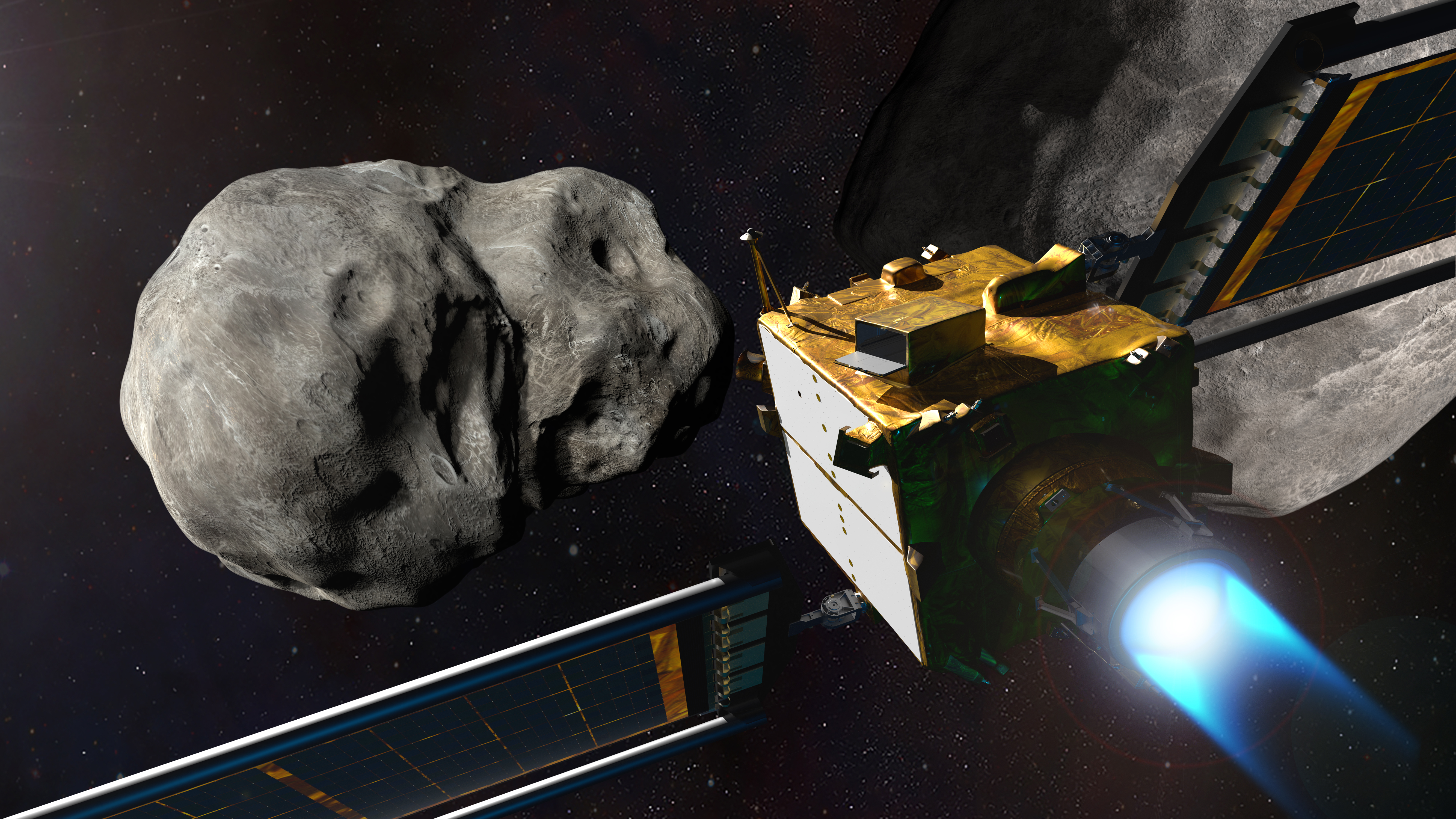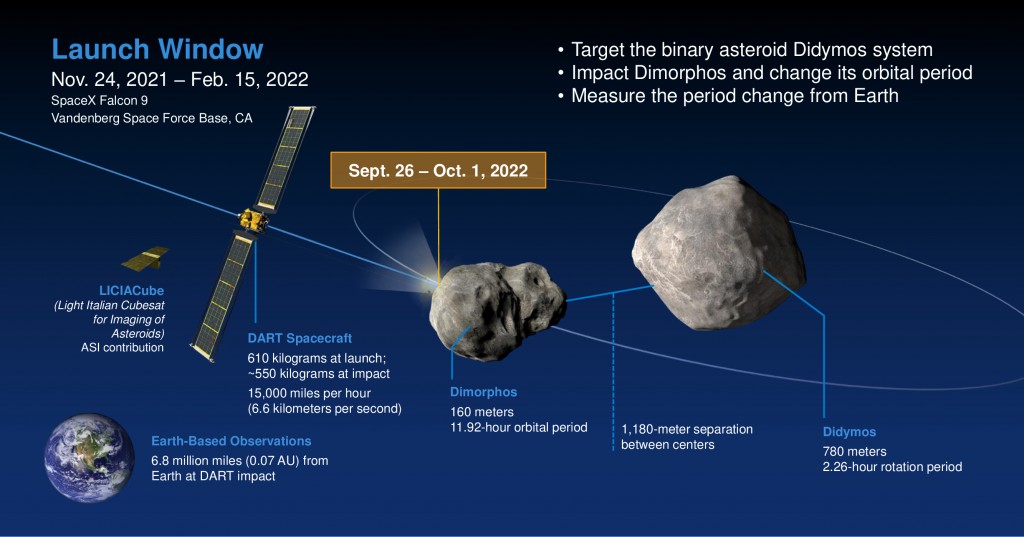DART: the Royal Observatory of Belgium participates in a NASA planetary defence mission
Brussels, 22 November 2021 – On November 24, 2021, at around 7:20 local Belgian time, NASA’s DART spacecraft will take off from the Vandenberg Space Force base in California (USA) as part of a planetary defence mission against asteroids. The Royal Observatory of Belgium is involved in this mission. The DART data will be used, among other things, to prepare the future ESA Hera mission, in which the Observatory participates with its GRASS gravimeter.
The DART mission, which stands for Double Asteroid Redirection Test, aims to see whether sending a spacecraft to crash on the surface of an asteroid can deflect it sufficiently so that it no longer poses a threat to the Earth. Less than a year after its launch, between September 26 and October 1, 2022, DART will approach a binary asteroid system consisting of Didymos, a 780 m diameter asteroid, and Dimorphos, which is 160 m long and so larger than a football stadium.
DART will collide with the Dimorphos asteroid at a speed of 24,000 km/h, or 6.6 km per second. This collision will change the orbital period of Dimorphos around Didymos, which will be measured from Earth. Thanks to this measurement, scientists will be able to obtain information on the best way to deflect an asteroid from its trajectory.
Özgür Karatekin and his team from the Royal Observatory of Belgium are involved in the DART mission as part of the international Asteroid Impact and Deflection Assessment (AIDA) collaboration. NASA and ESA, with its Hera mission scheduled for launch in 2024, are part of the AIDA collaboration.
Scientists from the Observatory will participate in the processing of DART data. Analysing the data from this mission will allow them to better understand the internal structure of asteroids, in the framework of the European projects PIONEERS (Planetary Instruments based on Optical technologies for an iNnovative European Exploration using Rotational Seismology) and NEO-MAPP (Near-Earth Object Modelling and Payloads for Protection) to which the Observatory contributes. The experience with DART will also help to better prepare the next mission, Hera, which will carry the GRASS gravimeter, developed by the Observatory with its Spanish industrial partner EMXYS.
The research of the Royal Observatory of Belgium related to this mission is funded by the Belgian Federal Science Policy (Belspo) with support from the ESA PRODEX programme. The PIONEERS and NEO-MAPP programmes have received funding from the European Union’s Horizon 2020 research and innovation programme.
More information:
Press kit of the DART mission: https://dart.jhuapl.edu/Press-Kit/index.php
Website of the PIONEERS project: https://h2020-pioneers.eu/
Website of the NEO-MAPP project: https://neomapp.eu/
Contacts:
Özgür Karatekin
Email: ozgur.karatekin AT oma.be
Guillaume Noiset
Email: guillaume.noiset AT oma.be


